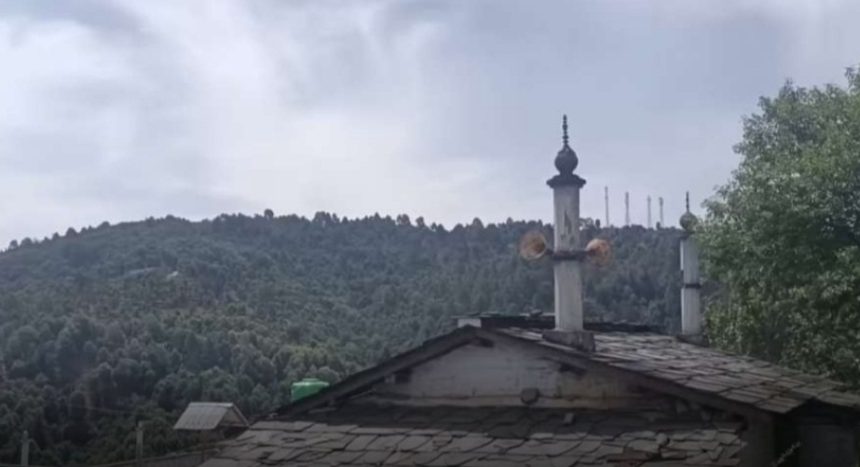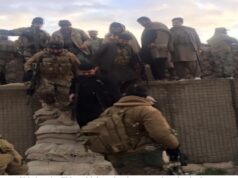Khoona : A Historical Perspective on Communal Camaradeire in Uttrakhand
Though known by the moniker of ‘Dev Bhoomi’, Uttrakhand nevertheless has been home to some of the most least known facts that throw light on its assimilating Muslims with an unequivocal aplomb

By Colonel Satish Singh Lalotra
The northern state of Uttrakhand, one of the most pristine entities of union of India has from the times of yore been closely associated with mythological places that goes back to thousands of years retaining its ‘Numerouno’ position unchallenged from any quarter. But then it has been primarily associated with religious places that count Hinduism, Jainism and Sikhism as its mainstay; maybe the seers of these religions trudged these mountains infused by the sublimes of the environment to attain and spread their wisdom in these snowy reaches that were beyond the realm of a normal human being.
The likes of Adi Shankaracharya goaded by the sublimes of the Himalayas is one such seer who in the 8th century AD left his home and hearth down south in the present state of Kerala to brand his mystic presence on the mental firmament of countless Hindus that now stands testimony in the form of Badrinath Dham and Joshimath.
Though known by the moniker of ‘Dev Bhoomi’, Uttrakhand nevertheless has been home to some of the most least known facts that throw light on its assimilating the minorities (read Muslims) with an unequivocal aplomb. The remote village of ‘Khoona’ located in ‘Lohaghat’ region of ‘Champawat’ district of Kumaon division of Uttrakhand is like a proverbial oasis of religious diversity with a preponderance of Muslim population that has made its fate co-terminus with that of the majority population for more than 550 ( five hundred & fifty ) years without as much a fuss.
It was only last year June that few unsavory incidents in the ‘Puraula’ of Uttarkashi tried to set in a sense of disquiet within the precincts of Khoona village which till now had flown the flag of communal harmony for more than 5 centuries plus. But even then the unshakeable bonds of communal harmony were not singed by the communal frenzy that had caught some parts of Uttrakhand. I had a brief encounter with this remote village of Khoona more than 3 decades back in the early 1990s while posted at Pithoragarh while still in service as a captain and didn’t bother much about it at that time.
It was only recently in 2019 after a gap of about 30 years when I once again took the remote highway connecting Tanakpur—Banbasa- Champawat- Lohaghat –Pithoragarh going enroute to the Badrinath Dham that I chanced upon to see the green minarets of the famous mosque of Khoona village that rose my query with my driver as to the presence of this mosque in an otherwise Hindu / Kumaoni area. The driver though a local couldn’t shed much info on this settlement except for the fact that it was one of the earliest recorded human settlements of Kumaon region which was patronized by the then ‘Chand rulers’ more than 500 years back.
I had forgotten this incident long back, but my interest was rekindled when by a chance encounter I read one of the write ups eulogizing this quaint looking village with a rich history of its Muslim inhabitants who had taken to Kumaoni culture and its way of living, and in the bargain practically jettisoning their own culture and roots of existence. Not only this, the inhabitants had held their ground of communal harmony and bonhomie even when the so called ‘Bull-dozer’ justice was being dispensed away by the Uttrakhand government to their community types elsewhere in the hilly state for being on the wrong side of the law.
A little digging up of information on the Chand Rulers of this area and their old dilapidated fort at Pithoragarh while on my short visit in 2019 showed up a mine of knowledge & past rich history that most of us are oblivious of even today. The Muslims of village Khoona that just about abuts the highway going from Tanakpur to Pithoragarh were made to settle down on a special request from the royal house of Chand Dynasty which ruled the area of Champawat –Pithoragarh more than 5 centuries ago. These Muslims were called as ‘Malihars’ and had their origin in Jaipur- Rajasthan. Let it be known that these Malihars were primarily the famous ‘Bangle makers’ who had carved a niche for themselves even in the royal house of Jaipur and were patronized by them for their painstaking job involving extreme craftsmanship resulting into making of dazzling bangles that ware adorned by the ladies of the Jaipur royal house.
Since such news even in those times travelled like a wild fire, the ladies of Chand dynasty too wanted to partake into the exquisite work done by these Malihar Muslims. The kings of Chand dynasty took upon themselves to grant a village to some of these Malihar Muslims to cut their travelling time from Jaipur -Rajasthan to the remote location of Champawat and settle down permanently. Thus this village of Khoona came into existence with Malihar Muslims as its inhabitants more as a mark of their indispensability for making exquisite bangles who by that time were a byword for this job all over India. Initially only six (6) families migrated from Jaipur- Rajasthan on express request of the Chand dynasty who later on proliferated into a sizable strength as time went by.
These Muslims later on took the hue of Kumaoni way of life in their language, culture, eating habits etc. The slow decline of the Chand dynasty too saw the dipping of fortunes of these Muslims who thought of then diversifying into agriculture / farming to keep their homes and hearth’s fire burning. With changing socio-economic patterns hitting the hills of Utrakhand too, the earning members of these families started migrating to greener pastures by taking on new and on demand vocational practices that could stand them in good stead in the long run in the various metro/ cities of the country and occasionally visiting their homes in Khoona during summer vacations.
The ‘Sine quo non’ of Khoona i.e. its mosque which was got built by the Chand rulers more than 550 years ago gave way to the vagaries of weather, which was again rebuilt about 150 years back in a typical Kumaoni architectural style with its roof made of grey coloured stone slabs in ‘Pahari style’. It is this mosque which is now visible from the highway when one travels with its green colored minarets jutting out of the azure blue skies of Champawat which I happen to see and stopped to ask my taxi driver its importance and origin. As if this was not enough one could make out the intermingling of these families with that of Kumaonis when one sees the houses of theirs which still have doors and windows having intricately carved out figures/figurines of Hindu deities like Hanuman, Saraswati, Laxmi etc.
This simplicity yet intricacy of religions (Hindu & Muslims both) which has been the wont of Khoona village, is now a near rarity in today’s India where at many places followers of both religions bay for each other’s blood at the drop of a hat. It is these people who should take a bus ride to such places in the interiors of India and see with their own eyes the sublime character of both these religions and their capacity to co-exist even when differences are galore in their very being.
Time the country shed its ambivalent nature of mollycoddling one religion at the expense of the other and started treating all with the same measuring tape of its avowed policy of ‘secularism’ so very much enshrined and practiced by the kings of Chand dynasty more than 500 years ago.
(Author is a retired army officer and a regular scribe of RK. He can be approached on his email slalotra4729@gmail.com)




